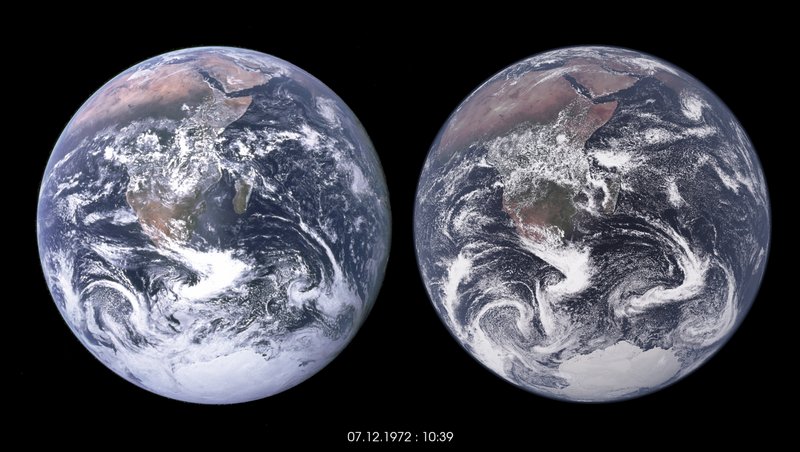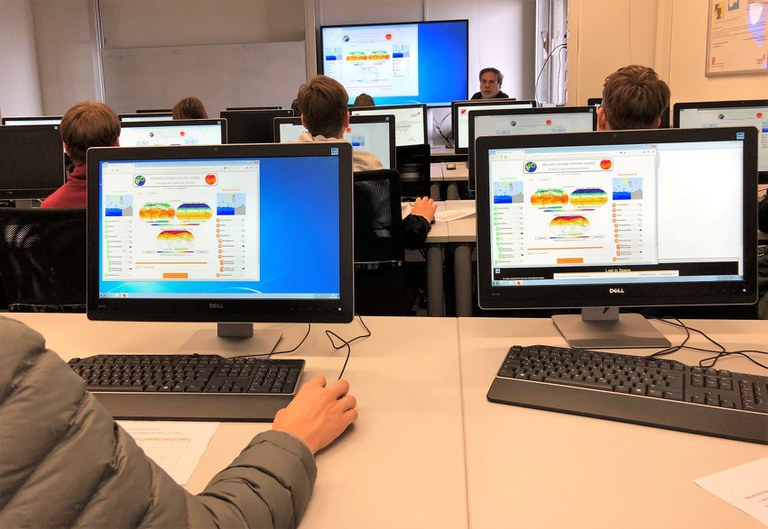Climate science and computational technology have recently merged in ambitious projects, such as EU’s Destination Earth or NVIDIA’s Omniverse. EVE links and enlarges the scope of such ambitious projects around the world to help each become more than the sum of their parts, and to expand our capabilities of understanding how climate and climate change are affecting our well-being and development.
By providing access to technologies that would otherwise be unaccessible to the scientific community, EVE will open new pathways for scientists and technologists to advance their own domains.
"With the current models, we are still looking at the world through blurred glasses and we could do so much better. EVE is about utterly transforming our capabilities, in partnerships with institutions across the globe."
Tim Palmer, Department of Physics, University of Oxford

Experts from various fields will have democratized access to the data space with climate projections of much greater fidelity, local granularity, globally.

Scientists will gain command of new technologies to build and use tools for the development of new analysis methods and proactive information production.

EVE will serve as an access point to the emerging high-performance computing technologies and artificial intelligence for transdisciplinary endeavors, increasing observation integration, impact assessments, risk management, globally.

Regionally distributed EVE nodes will include training facilities, programmes and tools for people from across the globe, to gain and produce knowledge using climate information of unprecedented quality and salience.
There are a handful of related activities (e.g., Destination Earth, NVIDIA’s Omniverse, and the DITTO Programme of the UN Ocean Decade). EVE draws impetus from them, but is larger in scope. EVE differs also through its focus on establishing a sustainable and equitable global footing that better links to the landscape of climate-related data and information, adds interactivity at scale, and is constituted to enable global capacity building, cooperation, and codevelopment. Depending on local circumstances, an EVE center could, however, emerge as an outgrowth of an existing activity.
AI is one of EVE’s core technologies. It can make models more performant, and thereby fit for greater purpose. EVE distinguishes between AI Inside, to refer to what is done to help the models perform better, and AI On-Top which describes methods to increase information extraction from model output and data. EVE will greatly expand the scope of AI in every regard. EVE’s digital commons anticipates the use of generative AI to enable interactivity (AI On-Top) with large amounts of data, and this is envisioned to be a game changer.
No. EVE is additive and complements existing activities by targeting important scales that would otherwise be out of reach, i.e., EVE’s ‘local granularity, globally’. EVE emphasizes better information provision, whereas research also targets knowledge creation, and these are symbiotic. EVE thus needs and benefits from ongoing modelling activities, for instance as coordinated by the World Climate Research Programme, but at the same time, it will also support those external research efforts through its technology development, its ability to set standards, by increasing their access to frontier computing, and by providing career paths for their trainees.
A smaller number of centers risks not meeting the ambitious computing requirements to fill the required data space with the required diversity in modelling approaches. Too few centers also make it more difficult to engage a sufficient breadth of users, thereby limiting access to data and expertise. More centers could help EVE be more inclusive, sample more climate trajectories, and engage more users. However, given each center’s need to access a critical mass of human resources for model development, to innovatively develop and maintain infrastructure, etc., the reality of limited human and financial resources, and EVE’s novelty, having fewer centers, each with a higher profile, is advantageous.
EVE’s use of high-performance computing requires substantial electricity resources. Based on practice at some of the world’s leading supercomputing facilities, it is estimated that each EVE center would need to access approximately 50 MW of power. The compute resources need not be sourced from a dedicated site but must facilitate interoperability of software and data, maintain computing co-proximate with the largest sources of data. By focusing on the development of just a few centers, and concentrating the powered delivery to access renewables and favor circular economies, for instance through productive use of ‘waste’ heat, EVE will be exemplary of responsible power production and usage.
The € 300M per center per year price tag was estimated based on the current budget of international organizations whose profile overlap with parts of EVE’s remit, and it anticipates a roughly equal split between funding for staff, running costs (mostly power), and investments (hardware procurements).
EVE relies on a vibrant climate research and services community, and cannot be funded at their expense. EVE centers can be expected to employ some of the leading climate science, climate impact, climate services, and technologists world wide, but in the end this will represent a very small fraction of these workforces. Without simultaneously strengthening ongoing research activities, EVE would loose access to trained staff, would become less innovative, and would fail to adequately understand and communicate its outcomes. Without simultaneously strengthening existing climate services EVE would loose its ability to connect its data and information provision to the communities it must serve, let alone scale this globally. In this sense, EVE will only be successful if it strengthens climate science and service more broadly.
Without EVE urgently needed information for adaptation and resilience building would be of inferior quality, and much less accessible to those that need it most. Some of EVE’s key technologies and methodologies may be developed anyway, but more slowly and then only by, and for, the few who can afford to do so. Climate information for business, finance, and global policy, would continue to proliferate, but would lack standardization, inclusivity, and a compelling tie to the best available science. Without EVE, research laboratories would continue to explore the frontiers of computing, but with diminished access, little participation from the global South, and a reduced ability to link their findings and technologies to inform climate actions. Climate services would continue to do their best to exploit advances in the science to inform users, but would be handicapped in their efforts. The operational aspect of EVE, the co-production of regularly updated information that matches the rapid pace of innovation, would be lost. The world won’t be empty-handed, but it would be left with less, and less trusted, information, leaving many less resilient. Just as profoundly, a chance to engage many more people in new, and more equitable, economies at the nexus of emerging technologies and sustainable development would have been missed.